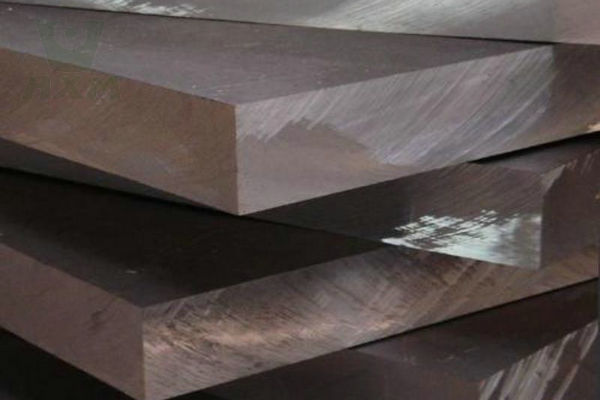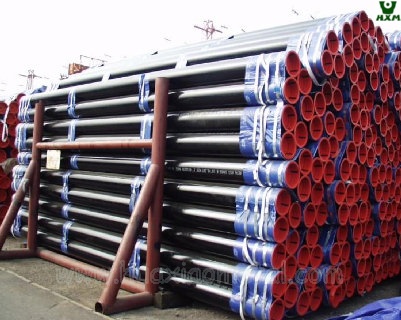Steel plate is an indispensable material with wide and diverse applications in the industrial and construction fields. In the manufacturing process of steel plates, hot rolling, and cold rolling are the two main processing methods, which produce steel plates with different characteristics, SPHC and SPCC respectively. SPHC (hot-rolled steel plate), due to its high-temperature rolling characteristics, is usually used in manufacturing structural parts, pipes, containers, and other projects that require higher strength and corrosion resistance.
SPCC (cold-rolled steel plate) has important applications in automobile manufacturing, electrical appliance manufacturing, furniture manufacturing, and other fields due to its excellent surface quality and dimensional accuracy after cold processing. This article aims to deeply explore the uses, types, and characteristics of SPHC and SPCC steel plates, to provide useful reference and guidance for research and practice in related fields.
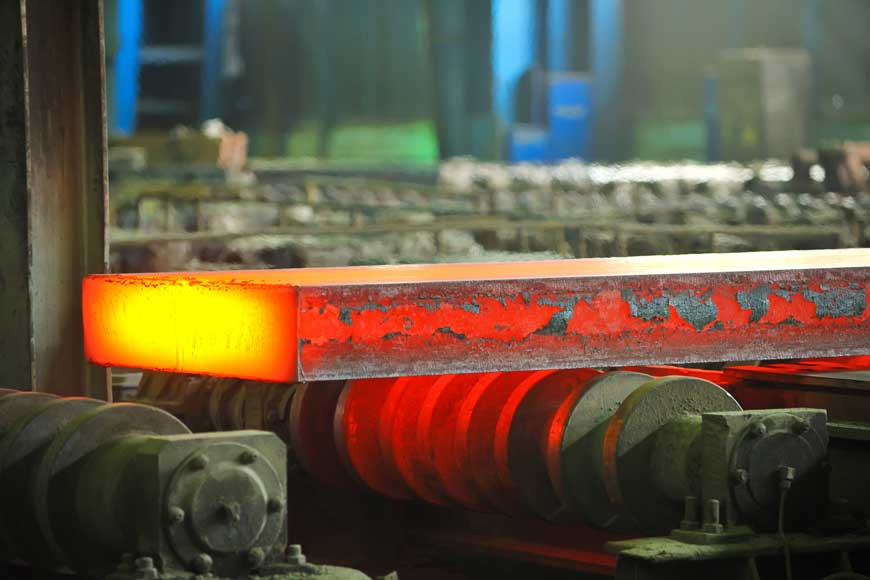
What is Rolled Steel Plate?
Before describing specific types, let us first explain the definition and characteristics of rolled steel plates as a whole.
Characteristics of Rolled Steel Plates
The so-called rolled steel plate, as the name suggests, is a “steel plate” made by “rolling”. Its characteristic is that it is relatively cheap and suitable for bending processing. Because it is a plate-shaped material, it is suitable for stamping and sheet metal processing and is often used for exterior decoration and covers that do not bear mechanical strength.
Rolling is a type of metal plastic processing that uses two or more rotating rollers to stretch the material while squeezing it. It resembles using a rolling pin to roll out udon and soba dough. The distance between the rollers can be changed to change the plate thickness, and multiple rollers can be arranged three-dimensionally to create unique cross-sections such as rails.
Because a steel plate called a flat steel plate is continuously processed using rollers, it is characterized by the ability to process continuous parts with the same cross-sectional shape at high speed. During rolling, in addition to plates, bars called bars, and steel pipes, H-shaped and L-shaped steel sections can also be produced. This processing method is more about making the materials used in the processing than making the product itself.
Rolling is roughly divided into two types depending on the processing temperature. Hot rolled and cold rolled.
Hot rolling is a processing method at a temperature higher than the recrystallization temperature. When processing iron-based materials such as rolled steel, processing is usually performed at a temperature of 900°C to 1200°C. The advantages of hot rolling are as follows.
• Because metal materials are at high temperatures, they can be rolled with less force
• Since the material is flattened at high temperatures, the crystal structure is stable and a tough material can be obtained
• Because it is processed at a temperature higher than the recrystallization temperature, work hardening does not occur. On the other hand, it has the following disadvantages.
• Heating materials require cost and energy
• Due to the high temperature of the material, it combines with oxygen in the air to form an oxide film on the surface
• Subject to thermal expansion and contraction, so dimensional accuracy is slightly reduced
Cold rolling is a method of rolling and processing metals at room temperature. Although it is processed at room temperature, the heat generated during processing will increase the temperature, so the metal being processed is not always at room temperature. The target is a temperature below 600°C. Cold rolling has the following advantages.
• No heating equipment required
• Able to obtain smooth and shiny surfaces
• Dimensional accuracy is higher than hot-rolling
On the other hand, cold rolling has the following disadvantages.
• Because it is processed at room temperature, greater force is required for processing.
• Work hardening may occur, in which case heat treatment such as annealing is required
The above contents are summarized in the table below.
| Hot Rolling | Cold Rolling | |
| Processing Temperature | 900℃~1200℃ | Normal Temperature |
| Processability | ◯ | △ |
| Dimensional Accuracy | △ | ◯ |
| Surface | Oxide film | Smooth |
| Post-Processing Heat Treatment | not required | required |
In addition, there is a method called warm rolling that is intermediate between hot rolling and cold rolling. Rolling is performed in the intermediate range of approximately 600°C to 900°C, and is a method that compensates for the shortcomings of both. But it’s not used much.
Rolled steel plate means that steel is rolled and processed into a plate shape during rolling. Rolled steel sheets are roughly divided into two types according to the rolling temperature. Those that are hot-rolled are called hot-rolled steel sheets (SPHC), and those that are cold-rolled are called cold-rolled steel sheets (SPCC).
SPHC Hot Rolled Steel Plate
What is SPHC Hot Rolled Steel Plate?
SPHC (steel plate hot commercial) is called hot rolled steel plate. Sometimes referred to as HOT (hot plate). As the name suggests, it is a steel plate made of hot rolling. Because it is a general-purpose plate for rolled steel plates, it is relatively cheap and suitable for bending processing, which is a major feature of it. Since it is classified as a material for general use rather than mechanical structural use, its strength is lower than that of structural steel such as SS400. The oxide film (scale) formed during hot rolling is called “black scale” and covers the surface of the steel plate. Black leather protects SPHC from corrosion and injury, but it does not have the reliability of painting and electroplating.
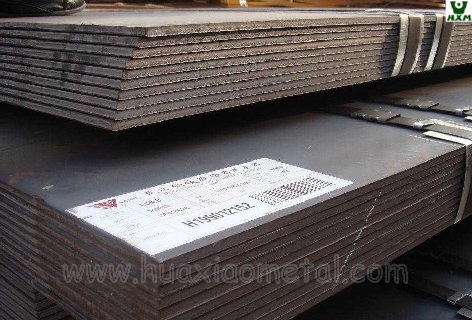
Uses of SPHC Hot Rolled Steel Plate
SPHC is classified for general use rather than mechanical construction use. Therefore, it is generally not used in situations such as bearing the strength of a structure. Since strength is not guaranteed, it is best to avoid using it in areas related to safety and reliability. On the other hand, because it is easy to bend and process, it is widely used in car bodies, housings of electrical equipment, etc. Because the material is relatively cheap, it is suitable for making larger parts such as exterior decorations and covers.
Advantages of SPHC Hot Rolled Steel Plates
• Inexpensive and easily available
• Excellent processability, especially suitable for bending processing
It is a general-purpose material that is widely distributed, so it is easy to obtain, which is a major feature of it. Compared with cold-rolled steel plates, which are also rolled steel plates, they are cheaper. Its characteristic is that the material is soft and suitable for processing, especially for sheet metal processing, pressing processing, and other bending processing. It is a material suitable for housings of electrical equipment that does not require much strength.
Disadvantages of SPHC Hot Rolled Steel Plates
• Tensile strength is smaller than SS400 etc.
• Does not look good as it is covered with black skin
The tensile strength of the material is not too great. Therefore it is classified as general purpose rather than structural steel. Not suitable for making strong parts of machinery and structures that require strength. In addition, it is covered with an oxide film (black scale) formed during hot rolling, so the appearance is black. The color feels similar to an iron pan without a special coating. Because it is not very beautiful, it is painted or other materials are used when used for exterior decoration.
SPHC Hot Rolled Steel Commonly Used Processing and Surface Treatment
What kind of processing does SPHC perform? The following introduces representative processing.
Bending Processing
Because it is a soft plate material, it is suitable for bending processing. Removal processing such as cutting is also possible, but laser cutting and punching in sheet metal processing are mostly used.
Surface Treatment
SPHC is used after surface treatment such as painting. When covered with an oxide scale, the paintability is not very good, so the oxide scale is usually removed before painting. There are various methods for removing oxide scale, and the most common one is the acid-based method called pickling. The material that has been pickled in SPHC is called SPHC-P.
Cold Rolled SPCC Steel Plate
What is SPCC Steel Plate?
SPCC (Steel Plate Cold Commercial) is a cold-rolled steel plate. Also known as rolled materials, cold plates, or cold rolled materials. It is made by pickling and cold rolling SPHC (hot rolled steel plate). The surface is smooth and shiny, and the appearance is close to the feeling of an “iron plate”. Because it is manufactured by further rolling SPHC, it is basically thinner than SPHC. Although the price is relatively low compared with other materials, the cost is higher than SPHC. It is soft, has excellent formability and workability, and is also suitable for processing such as deep drawing. There is no film on the surface, so it is easy to rust, and it is usually circulated in a state of being coated with oil. After processing, surface processing such as electroplating and painting must be performed.
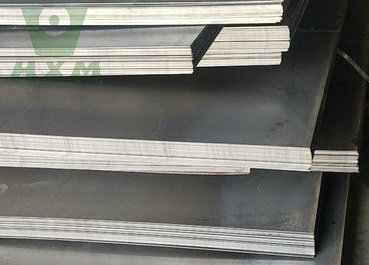
Uses of SPCC Cold Rolled Steel Plate
The tensile strength of SPCC is the same as that of SPHC. However, it is thinner than SPHC, so it is not suitable as a structural component. In addition to being used as a material for thin parts such as gaskets, it is also widely used in automobile bodies, building materials, etc. Maybe thinner covers made of iron also have a stronger impression.
Advantages of SPCC Cold Rolled Steel Plates
• Beautiful surface
•Excellent processability and easy molding
• High precision of materials
• Relatively cheap and easily available
SPCC has better ductility than SPHC and has a high degree of processability. The cost is higher than SPHC, but compared with stainless steel and other steel plates, it is cheap and easy to buy.
Disadvantages of SPCC Cold Rolled Steel Plates
• Easily oxidized and requires surface treatment
SPCC is a material that is extremely susceptible to oxidation. Of course, it is not suitable for long-term storage, and you also need to pay attention to its operation. It needs to be processed immediately after arrival, and surface treatments such as painting and electroplating must be carried out.
SPCC Cold Rolled Steel Commonly Used Processing and Surface Treatment
What kind of processing does SPCC perform? The following introduces representative processing.
Bending Processing
It is a thin and soft plate material, so it is suitable for processing such as bending and stretching. Since it has excellent processability, it can also be processed in various ways.
Surface Treatment
SPCC requires surface treatment. The material is prone to rust in its original state, so anti-rust treatments such as painting and electroplating are carried out before use. The surface is smooth, so it has excellent decorative properties and a very beautiful appearance can be obtained by painting, plating, etc.
SPCC VS SPHC Data Sheet
Mechanical Properties
The mechanical properties of SPHC and SPCC are shown in the table below. The tensile strength of both is similar.
| Material | Tensile Strength (N/mm2) | Elongation(%) | |||||
1.2mm < Plate Thickness | 1.6mm < Plate Thickness | 2.0mm < Plate Thickness | 2.5mm <Plate Thickness ≤3.2mm | 3.2mm < Plate Thickness | 4.0mm< Plate Thickness | ||
| SPHC | 270≥ | 27≥ | 29≥ | 29≥ | 29≥ | 31≥ | 31≥ |
| Material | Tensile Strength(N/mm2) | Elongation(%) | ||||||
| 0.25mm<Plate Thickness ≤0.30mm | 0.30mm<Plate Thickness ≤0.40mm | 0.40mm<Plate Thickness ≤0.60mm | 0.60mm< Plate Thickness | 1.0mm< Plate Thickness | 1.6mm< Plate Thickness | 2.5mm< Plate Thickness | ||
| SPCC | 270≥ | 28≥ | 31≥ | 34≥ | 36≥ | 37≥ | 38≥ | 39≥ |
Physical Properties
The physical properties of SPCC are shown in the table below. There are no data on the physical properties of SPHC.
| Density | Young’s Modulus | Thermal Expansion Coefficient | Thermal Conductivity | Resistance |
| g/cm3 | N/mm2 | (0~100℃)10-6/K | W/(m・K) | μΩ・㎝ |
| 7.87 | 206,000 | 11.7 | 73.3 | 13 |
Standard Dimensions for SPHC and SPCC
The standard dimensions of SPHC and SPCC are shown in the table below.
| Types | Material | Shape | Unit | Standard Dimensions |
| Cold Steel | SPCC | Plate | t | 0.4, 0.5, 0.6, 0.7, 0.8, 1, 1.2, 1.6, 2, 2.3, 3.2 |
| Hot Rolled | SPHC | Plate | t | (1.2), 1.6, 2.3, 2.6, 3.2, 4.5 |
※Standard sizes are reference values. If you want to get more material sizes, please contact us directly!
In Conclusion
SPHC and SPCC are very commonly used general iron plates. A rough distinction between usage methods is that if you want to reduce the price, choose SPHC, and if you want to make thin and high-precision products, choose SPCC. The above content is some analysis of SPHC and SPCC made by our company. If you want to know more information, please contact us directly!


